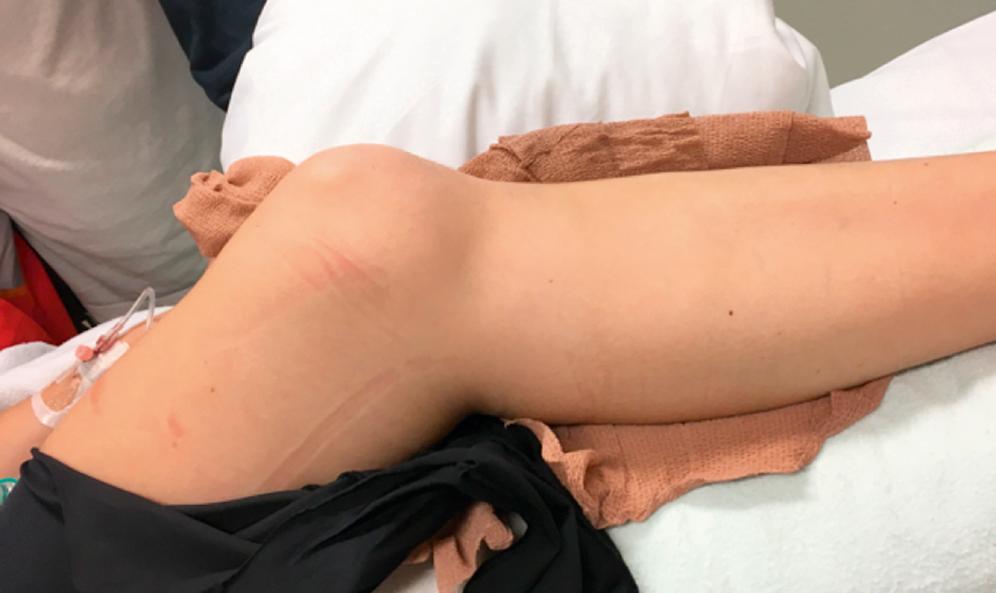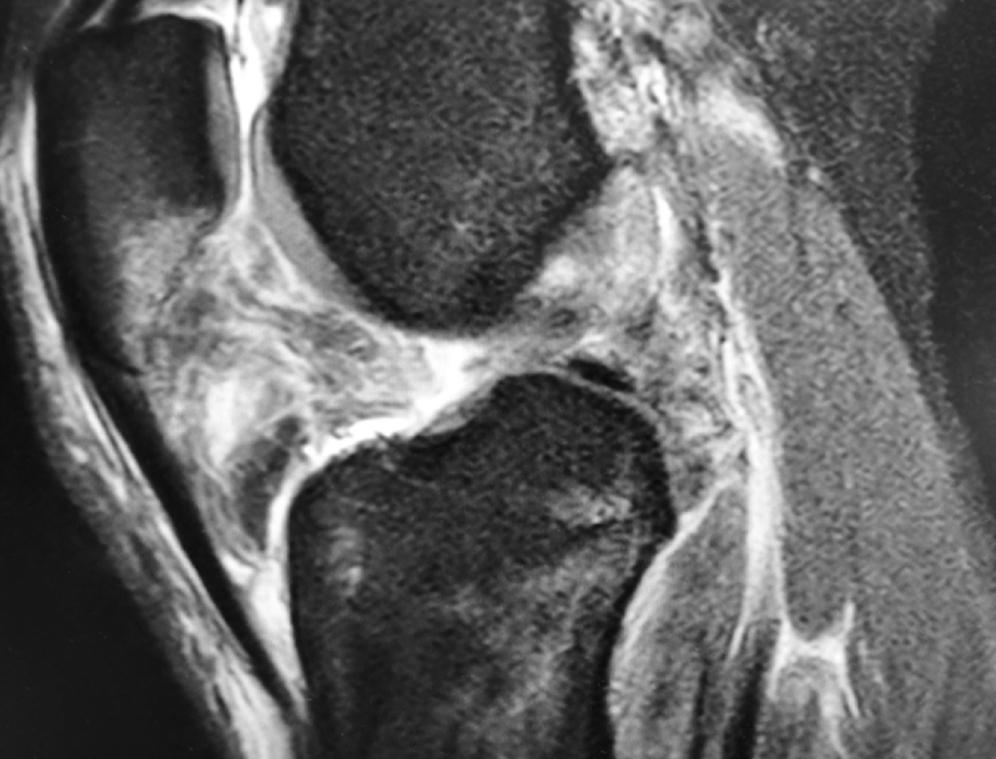Physical Address
304 North Cardinal St.
Dorchester Center, MA 02124
Multiligament knee injuries (MLKIs) are a challenging clinical entity because of the increased number of ligaments involved, associated injuries, diagnosis, decision making about the optimal treatment and rehabilitation. These injuries are not as rare as previously reported; therefore a high level of suspicion and a thorough and systematic evaluation are mandatory to avoid missed or late diagnosis. Furthermore, some injuries may be misdiagnosed because about 50% of knee dislocations are reported to reduce before presentation. Historically, multiligament knee injuries were reported in association with knee dislocations ( Figs. 11.1 and 11.2 ); however, improved understanding of these injuries and better diagnostic tools have shown that not all MLKIs are caused by knee dislocations. True knee dislocations are rare and are associated with a higher risk of neurovascular injuries, , which can further complicate the injury and affect the prognosis. , It is important to diagnose and treat all injured structures because failure to address all injured structures can compromise knee function, leading to ligament reconstruction failure and poor outcomes.


Previous studies reported that multiligament knee injuries caused by knee dislocations accounted for about 0.02% to 0.2% of all orthopaedic injuries. In a study based on registry data, Arom et al. estimated that the incidence of MLKI may be as high as 0.072 per 100 patient years.
Historically, knee dislocations have been associated with high-energy trauma such as motor vehicle accidents, falls from heights and farm or industry injuries. In the 19th and early 20th centuries the mechanisms of injury reported in the literature usually included more dramatic mechanisms such as a cart and horse falling on its owner, a man on horseback whose leg was pinned between a rail and the horse from which he was being thrown and, less often, some less dramatic injury mechanisms such as falls. With the advent of motorised vehicles, industrialisation and sports participation, the mechanisms of injury have changed.
Some studies have reported that 44% to 47% of MLKIs in their series were caused by sporting injuries. , With increasing sports participation, it is important to be aware of the possibility of complex knee injuries, despite an apparent low-energy mechanism, because these injuries can have devastating consequences if not properly diagnosed and managed. Furthermore, with the growing global burden of obesity, it is important to be aware of ultra-low-velocity knee dislocations and MLKI in obese individuals. Morbidly obese patients who sustain ultra-low-velocity MLKI have a high risk of neurovascular injuries and postoperative complications. The injury mechanism will differ depending on the clinical setting (trauma centre versus elective surgery centre), location (city, populations, country) and activities that are common in that area.
The medial side is the most commonly injured side of the knee, and up to 78% of high-grade (grade III) MCL injuries have an associated lesion, especially cruciate ligament and meniscus injuries. , Geeslin et al. reported that only 28% of posterolateral corner (PLC) knee injuries were isolated injuries, suggesting that most PLC injuries are combined ligament injuries or MLKI. Moatshe et al. reported that medial and lateral side injuries in knee dislocations (KDs) accounted for 52% and 28%, respectively, whereas Becker et al. reported a higher incidence of lateral injuries (knee dislocation grade III lateral (KDIII-L)), accounting for 43% of knee dislocations in a level 1 trauma centre.
Concomitant meniscal and cartilage injuries are common in multiligament injuries. Moatshe et al. reported that the incidence of meniscal injury in conjunction with multiligament knee injury was 37.3%, whereas the incidence of concomitant cartilage injury was 28.3%. Krych et al. reviewed a series of 122 knees and found that meniscal or chondral injury was present in 76% of cases. Richter et al. found that meniscal injury was only present in 15% of cases of multiligament knee injury, suggesting a lower prevalence. In a study on 194 sports-related MLKIs, LaPrade et al. found that 30% of the patients had chondral injuries and 55% had meniscal injuries. There has been increasing focus on meniscal root injuries; however, data on meniscal root injuries in the setting of MLKI are still lacking.
The rate of popliteal artery injury in knee dislocations has been reported to range between 7% and 48%, , , and as high as 64% in cases of concomitant fractures, depending on the individual hospital reporting. Medina et al. reported that the incidence of neural and vascular injury in patients who sustained knee dislocation was 25% and 18%, respectively. Becker et al. reported a similar incidence of neural and vascular injury at 25% and 21%, respectively, in a series of 106 patients. Moatshe et al. evaluated 303 patients with knee dislocations and reported that vascular injuries occurred in 5% of the cases, whereas common peroneal nerve injury occurred in 19%. Interestingly, Moatshe et al. also found that patients who had a PLC injury had 42 times greater odds of experiencing a peroneal nerve injury and 9.2 times greater odds of experiencing a popliteal artery injury than patients without a PLC injury. Furthermore, patients with peroneal nerve injury had 20 times greater odds of experiencing concomitant vascular injury. Together these studies highlight the importance of evaluating for simultaneous neurovascular involvement when evaluating patients with MLKI, and the surgeon should not hesitate to pursue additional angiographic imaging in patients who suffer associated peroneal nerve injury. Level 1 trauma centres, where the majority of patients with knee dislocations have high-energy trauma, usually report a higher prevalence of concomitant vascular injuries compared with elective clinics treating low-energy injuries. The risk of vascular injury is correlated with the degree of energy, concomitant fractures and type of dislocation. Timely diagnosis of vascular injuries is imperative to minimise the risk of amputation as a result of limb ischemia.
The most widely used classification was described by Schenck in 1994 and later modified by Wascher. This classification system is based on the anatomical pattern of ligament injury and reports associated injuries, including neurovascular injuries and fractures ( Table 11.1 ).
| KDI | Injury to single cruciate plus collaterals |
| KDII | Injury to ACL and PCL with intact collaterals |
| KDIII-M | Injury to ACL, PCL, MCL |
| KDIII-L | Injury to ACL, PCL, LCL |
| KDIV | Injury to ACL, PCL, MCL, LCL |
| KDV | Dislocation plus fracture |
A thorough history is mandatory to understand the injury mechanism and the energy involved. A video demonstrating the injury may also help elucidate the mechanism. High-energy injuries are usually associated with other organ injuries, including fractures and head, thorax and abdominal injuries. All patients with high-energy trauma mechanism should be evaluated for a potential knee injury, and patients with an MLKI should be evaluated for concomitant injuries, including fractures and neurovascular injuries. Low-energy injury mechanism usually results in an injury confined to the knee.
Become a Clinical Tree membership for Full access and enjoy Unlimited articles
If you are a member. Log in here